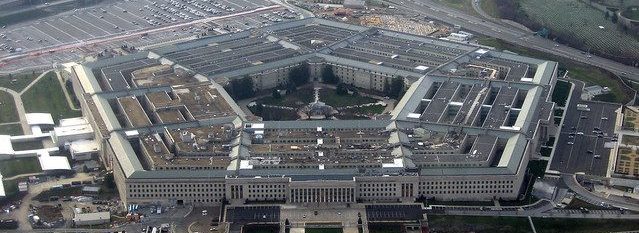The Defense Department (DoD) is seeking to make history by choosing one vendor as the provider for its cloud computing network. The victor will manage DoD’s Joint Enterprise Defense Infrastructure (JEDI) cloud, winning a 10-year, $10 billion contract and one of the fiercest bidding wars for federal IT in memory.
The contest to become JEDI’s vendor, however, has had many twists and turns. The heated competition has featured some of the world’s largest technology companies. After more than a year of conflict, however, the process unexpectedly froze in August 2019.
While JEDI’s future remains increasingly unclear, we can still examine what it is and how it might impact your agency. GovLoop is here to answer all your questions about this possibly pivotal moment in government technology.
What is JEDI?
JEDI is a cloud network that DoD envisions hosting all its applications, data and services. DoD sees JEDI as critical for maintaining America’s military advantage over its adversaries; the information that JEDI potentially handles – such as military communications, troop deployments and national intelligence – could also have life or death consequences for warfighters in combat.
Subsequently, JEDI must meet extremely high standards for DoD’s computing, storage and security. More importantly, JEDI must also enable DoD to rapidly capitalize on modern software. The department hopes to keep up with commercial technology innovations using JEDI, and it additionally wants the cloud to help it adopt emerging technologies. With other nations exploring tools such as artificial intelligence (AI), the pressure is on the U.S. to remain in the race or fall behind. AI involves machines imitating cognitive functions, such as learning, that are usually associated with humans; the technology is widely seen as crucial for future warfare.
DoD’s use of JEDI, meanwhile, would rely on Infrastructure-as-a-Service (IaaS) and Platform-as-a-Service (PaaS) cloud computing. IaaS clouds provide organizations with IT infrastructure, while PaaS clouds provide them with platforms for developing, managing and running their applications. JEDI’s setup would give DoD a platform for most of the agency’s applications and data. The resulting IT operations would be cheaper, faster and more agile.
Why is JEDI controversial, and why does it matter?
If awarded, JEDI would rank among the federal government’s most expensive IT procurements. So far, the contract has prompted heated competition among several of the world’s largest and most powerful technology companies. As one of the federal government’s biggest agencies, DoD often sets trends that agencies follow at every level from the top down.
When JEDI’s request for proposal (RFP) was announced in 2018, the contract immediately attracted Amazon Web Services (AWS), IBM, Oracle and Microsoft. RFPs are documents that agencies interested in procuring products or services use to solicit business proposals for them from potential suppliers, often through a bidding process. Google, meanwhile, declined to participate in JEDI’s RFP process as it felt the project could compromise its corporate values.
JEDI and its RFP process quickly proved controversial. In 2018, Oracle accused DoD of favoring AWS by asking for a single cloud vendor before JEDI bids were due. Oracle also argued that a DoD employee who worked on JEDI during the procurement process was biased toward AWS, having previously worked there.
The Government Accountability Office (GAO) ultimately rejected Oracle’s claims, prompting the company to take them to the U.S. Court of Federal Claims instead. The Court handles federal contract disputes, and Oracle’s move put it on a collision course with DoD over JEDI.
Despite Oracle’s complaints, DoD selected AWS and Microsoft as the finalists for JEDI in April 2019. Next, a federal judge ruled in July 2019 that AWS didn’t unduly influence JEDI’s contract, seemingly freeing DoD to crown its winner.
What’s next for JEDI?
The public debate over JEDI has caught President Trump’s attention. In July 2019, Trump said he would ask DoD to look “very closely” at JEDI following “tremendous complaints” about AWS and the project’s bidding process.
Trump’s remarks cast doubt on JEDI’s future, as he can cancel the project. Multiple lawmakers urged him to delay the project over DoD’s bidding process, while others argued JEDI is vital for national security.
The plot thickened in August 2019 when Defense Secretary Mark Esper said he would review JEDI’s acquisition process after receiving multiple complaints about it from congressional members. Esper was confirmed to his post in July 2019, making the review one of his first moves as Pentagon chief.
Later in August 2019, Chief Information Officer (CIO) Dana Deasy announced that DoD would not be awarding JEDI that month as he had initially suggested. Despite this, Deasy added that Esper was still evaluating JEDI rather than pausing it outright.
JEDI’s fate now seems unclear as Esper analyzes the project. Further complicating the situation, the Pentagon Inspector General (IG) announced in August 2019 that it would examine major steps of JEDI’s acquisition process. DoD’s IG said that its probe would include the RFP process, JEDI’s overall requirements and potential conflicts of interest.
Despite these setbacks, DoD hopes that JEDI will provide U.S. warfighters with “information superiority” over their enemies. DoD also imagines that JEDI will give America a technological advantage by enabling such emerging technologies as automation, AI and the Internet of Things (IoT). Automation involves technology performing manual processes and procedures with minimal human aid; IoT devices are physical tools with internet connectivity for creating, storing and trading data.
Technologies such as these help warfighters by creating better, faster decision-making wherever conflict exists. These tools will also improve DoD’s command, control and communications (C3) systems, boosting its coordination worldwide. JEDI will additionally aid DoD by reducing its IT operating costs, making daily routines more efficient and securely handling the agency’s sensitive data.
In the second part of this two-part series, we’ll examine what impact JEDI might have on how your agency approaches its procurement, security and workforce for cloud computing. GovLoop’s next JEDI blog is scheduled to publish this Thursday.





Leave a Reply
You must be logged in to post a comment.